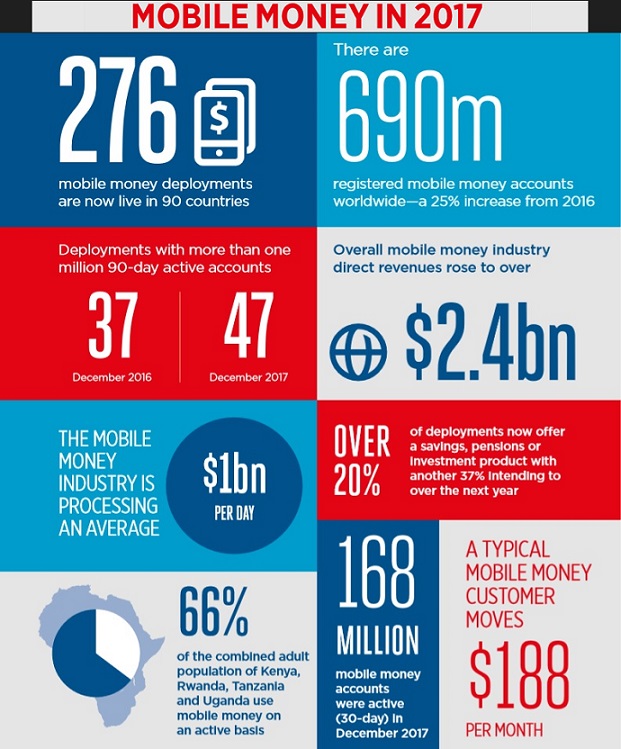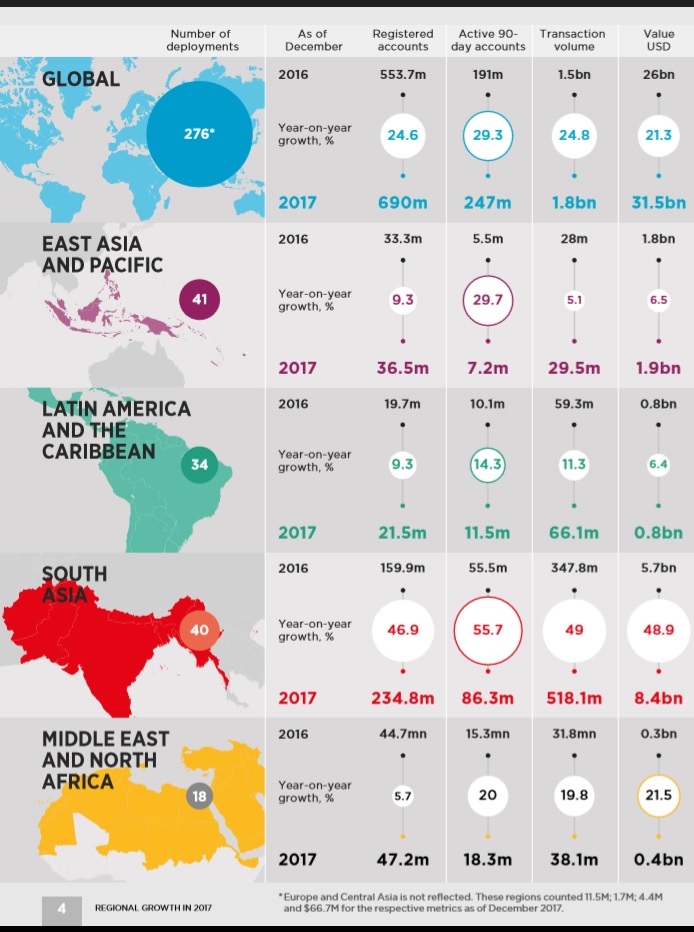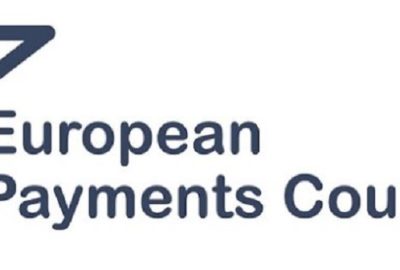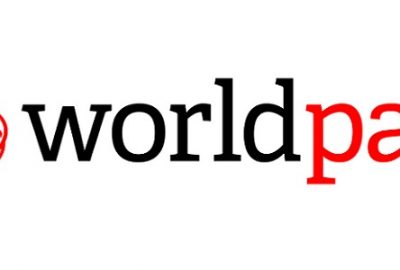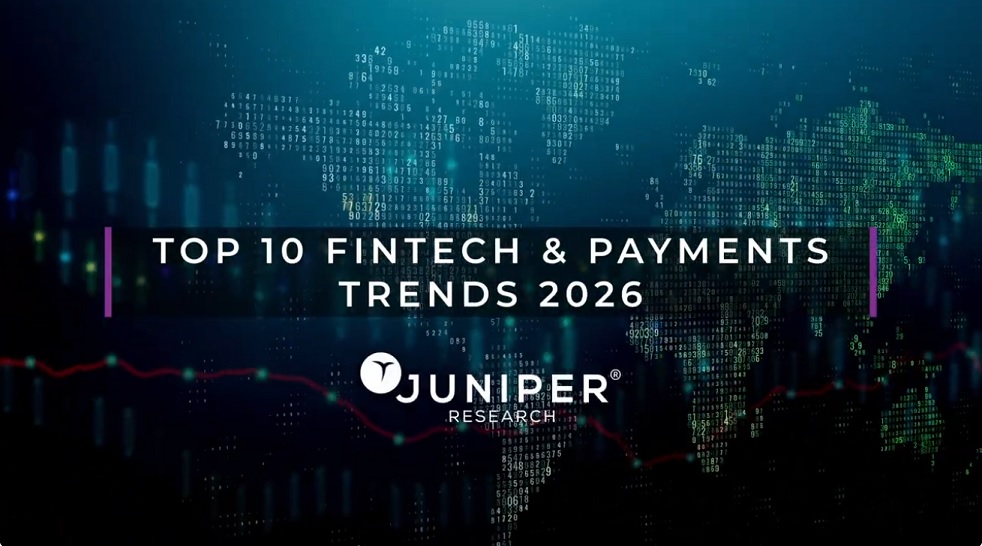GSMA report: in 2017 the mobile money industry processed US$1 billion a day, generating direct revenues of $2.4 billion
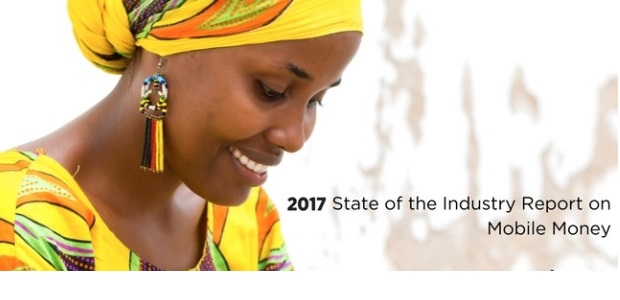
The GSMA today unveiled its seventh annual ‘State of the Industry Report on Mobile Money’, offering a current snapshot of the mobile money landscape and highlighting the impact that greater financial inclusion has on lives, economies and innovation. The report provides the only comprehensive picture of mobile money around the globe.
”Today, with more than 690 million registered accounts in over 90 countries, mobile money has evolved into the leading payment platform for the digital economy in many emerging markets. The report shows that, in 2017, the mobile money industry processed transactions worth a billion dollars a day, generating direct revenues of over $2.4 billion.”, according to the press release.
“As the Sustainable Development Goals (SDGs) enter their third year, mobile technology is proving to be an essential tool for delivering these global goals with increased connectivity and innovative services enabling more inclusive communities,” said Mats Granryd, Director General, GSMA. “Mobile money remains a central part of this story, contributing to 13 of the 17 SDGs, enabling access to essential services like health and education, empowering women with employment opportunities and reducing poverty by offering life-enhancing financial services, often for the first time.”
New Trends
The report shows a number of new trends in mobile money in 2017, including the accelerated growth of bank-to-wallet interoperability, the growing adoption of smartphones, the proliferation of fintech companies, the digitisation of new sectors of the economy, and renewed efforts by companies and governments to reach the most vulnerable and underserved. Sub-Saharan Africa has long been the epicentre of mobile money and growth in this region shows no sign of slowing, but as the industry has matured, mobile money has also gained traction in other parts of the world.
In 2017, for the first time, growth of the industry was led by regions other than Africa. With 47 per cent year-on-year growth, South Asia was the fastest-growing region in terms of registered accounts and now represents 34 per cent of registered accounts globally.
Mobile Money Reaching Scale
A steady increase in active customers, transactions and direct revenue are signs that mobile money is evolving into a sustainable industry and represents an important driver of economic growth in developing markets, particularly through formalising payments, increasing transparency and boosting GDP. With mobile money now available in over 90 countries, including three-quarters of low- and lower-middle-income countries, it has become the leading payment platform for a digital economy in many emerging markets.
The research further shows:
. Strong growth in customer registrations in 2017 led to the addition of over 136 million new registered accounts, bringing the global total to 690 million mobile money accounts, a 25 per cent increase from 2016;
. A growing number of mobile money services are seeing the proportion of their customer base regularly using their service increase to over 50 per cent, especially where providers have a strong distribution network, enabling regulation and rely more on an account-based business model;
. More funds are entering and leaving the mobile money ecosystem in digital form; bulk disbursements, bill payments and bank-to-wallet transactions have been the main drivers. In 2017, nearly 25 per cent of incoming funds were digital, compared to nearly 12 per cent in 2012; and
. Many successful providers are decreasing the net cost of the agent network – the cost of managing an agent network can account for more than half of total revenues, so this trend can significantly affect investment incentives.
Future Considerations
As a burgeoning fintech community positions itself as the gateway of choice for new digital services, a number of traditional tools will remain relevant. The persistence of the cash economy in emerging markets means that complex distribution networks will continue to be crucial for digital services to interface with physical lives. In a business that relies deeply on trust, the role of longstanding brands and the understanding of local context will also remain integral to reaching people outside of the formal system.
The policy and regulatory environment will play a determinant role in establishing incentives and setting national ambitions. As regulators confront questions around data protection, business models, and more, the policy end game of greater inclusion must remain at the fore. Providers able to effectively inform and support this process will be more likely to thrive.
Granryd added, “In an increasingly turbulent world, mobile money is also providing a lifeline, with digital humanitarian cash transfers and affordable international remittances giving refugees safe and convenient ways to meet pressing needs. We are also continuing to focus on narrowing the gender gap in access to financial services through programmes such as the Connected Women Commitment initiative.”
Regional growth in 2017
The full report is available here: The 2018 State of the Industry Report on Mobile Money.
The State of the Industry Report on Mobile Money draws on the results of the annual GSMA Global Adoption Survey of Mobile Financial Services and data from the GSMA Mobile Money Deployment Tracker, and provides insights on mobile money performance from the GSMA’s engagement with the industry.
About the GSMA
The GSMA represents the interests of mobile operators worldwide, uniting nearly 800 operators with more than 300 companies in the broader mobile ecosystem, including handset and device makers, software companies, equipment providers and internet companies, as well as organisations in adjacent industry sectors. The GSMA also produces industry-leading events such as Mobile World Congress, Mobile World Congress Shanghai, Mobile World Congress Americas and the Mobile 360 Series of conferences.
Dariusz Mazurkiewicz – CEO at BLIK Polish Payment Standard
Banking 4.0 – „how was the experience for you”
„To be honest I think that Sinaia, your conference, is much better then Davos.”
Many more interesting quotes in the video below:
